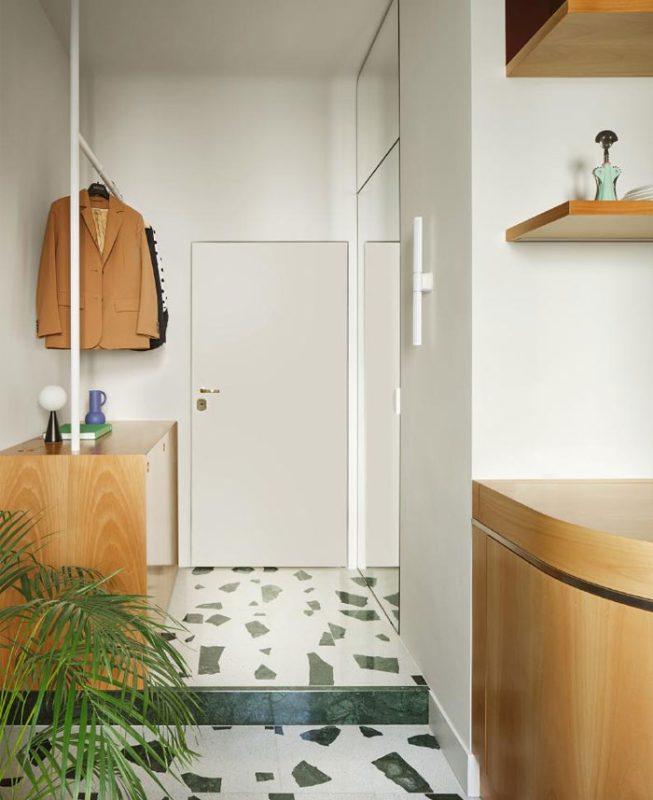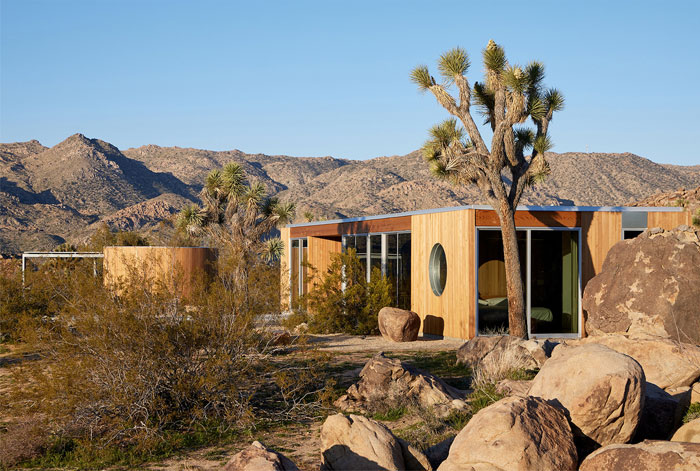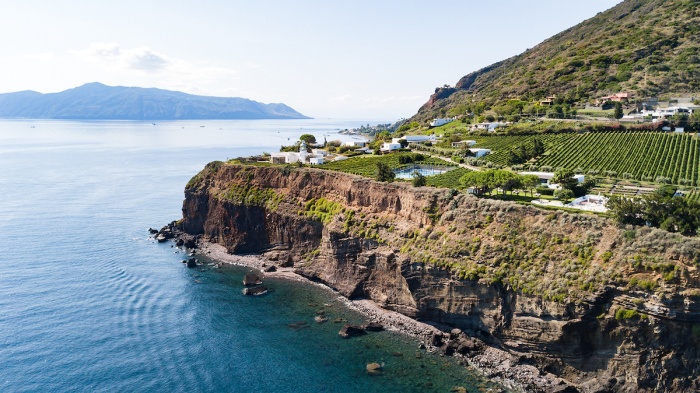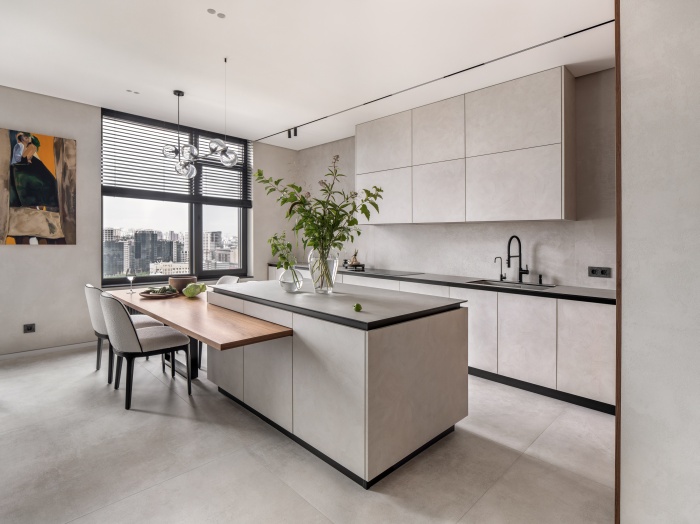Micro Living by ATOMAA

The primordial refuge is not much more than a hearth and a protected space for rest. But if the refuge moves downtown, then it needs an additional space, one consecrated to the spirit of the city. It consists of this and little more: an alcove behind a screen, a small kitchen, a living room, and our most beloved knick-knacks.
Here, two windows overlook a quiet courtyard and three magnolia trees. And they are high enough to frame a private piece of sky. Outside, just beyond the curtain of a 1920s building, swarms the city of design with its international schools (IED is just around the corner) and of its renowned pastry shops. These are the dowries of this little treasure chest, that is the remnant of a reckless subdivision of the 80s: the silence and the light of these two views.
When the plan you work on is a 5,5 by 3,8 meters rectangle, everything seems too close, every space too vertical, every piece of furniture bulky. So, remembering Eames and his room, we resorted to all the necessary tricks, putting into practice the tricks of a craft we are learning.
The full-height mirror, which is half the door to the bathroom and half the door of a cabinet, doubles the size of the entrance and frees the screen wall from its constraints. But it is also the very useful mirror for the last look at your outfit before leaving home.
The spatiality is broadened by the horizontal design of the furniture, which never exceeds the two ancestral heights: that of standing work and that of sitting.
The blue color of the back wall is a trick to increase the depth of the living room but it is also the right color to envelop your awakening.
When space is limited then it must be flexible and pleasantly ambiguous: what it is a kitchen at 7 at 9 it is my little cinema. What makes this duplicity possible are the special furnishing objects, which when open evoke a spatiality, when closed a completely different one.
The dining table is round and more generous than one might think for our little urban retreat. Its metamorphosis takes place in two moves too: the top retracts to become a white circular canvas on the wall, while the shelf that supports it becomes the backrest of the bench that extends under the windows.
The kitchen has a steel backsplash that closes in two movements, hiding burners and water, and relieving the space from disorder. This gesture and its curved shape make it resemble a chest or a console, two objects that soon take us back to the image of a small lounge.
Finally, the wooden bed-alcove contains within itself all the elements of the small bedroom, almost as if it were a small treasure chest, the trunk that contains our most useful clothes for our trip to the city.
Its headboard, deep enough to accommodate bedtime books, hides comfortable cabinets. Its top lifts and a tiny door gives us access to a small personal walk-in closet with two fronts.
A secret drawer, present in the equipped wall of the living room, is the comfortable step that allows us to hide on the floor of this welcoming alcove.
These spaces, although alive with transformations, aim to convey a sense of calm serenity. This is why we thought of a limited and truthful material palette: what is made of wood reveals its vital essence, what is metallic shows its sidereal shine. Everything is designed to favor light and its reflections: the white plastered walls of the living room reveal the bright colors of the more cozy and intimate spaces.
Thus, a small window above the kitchen-console illuminates the space with the ruby reflection with which the bathroom is covered, where the handmade zellige tile wants to evoke the vaporous intimacy of a small and personal spa. In an ambiguous and very fun to design illusion, the mirror over the sink becomes transparent in its highest part to allow the entry of natural light coming from beyond the wall.
Typology: Micro Living; Place: Milan, Italy; year: 2024.03; Sqm: 21; Project Design: ATOMAA; Design Team: Umberto Maj, Andrea del Pedro Pera, Cesare Galligani, Bianca Magi, Fabio Figaroli; Photographer: Alberto Strada;







